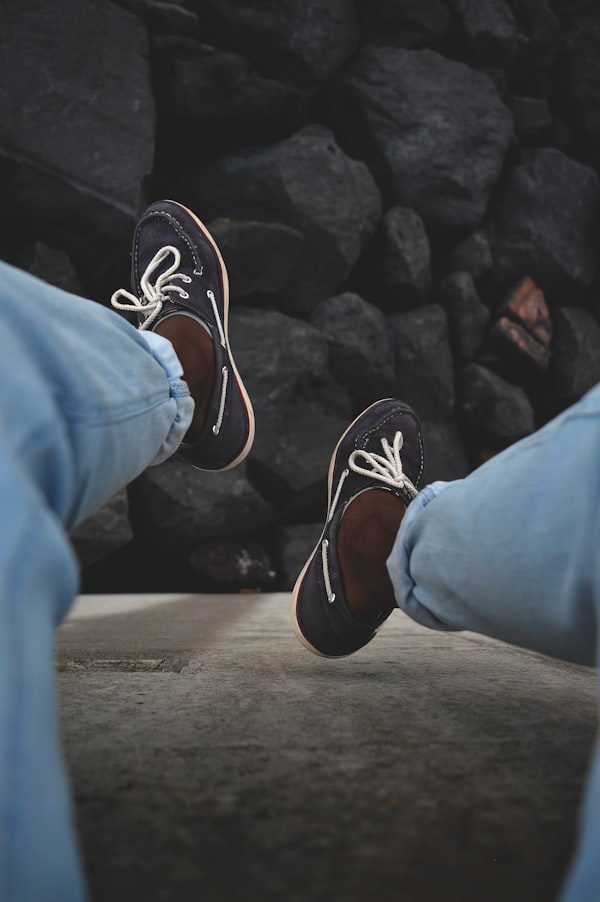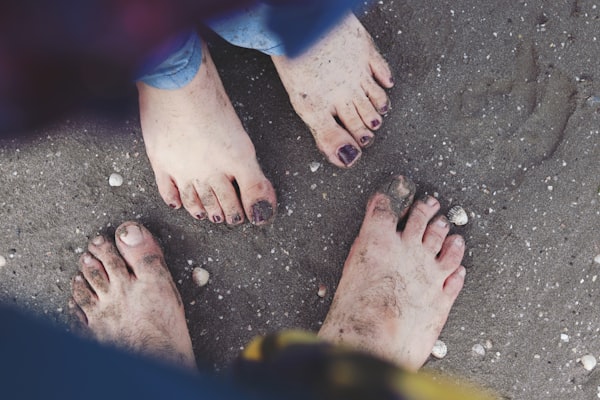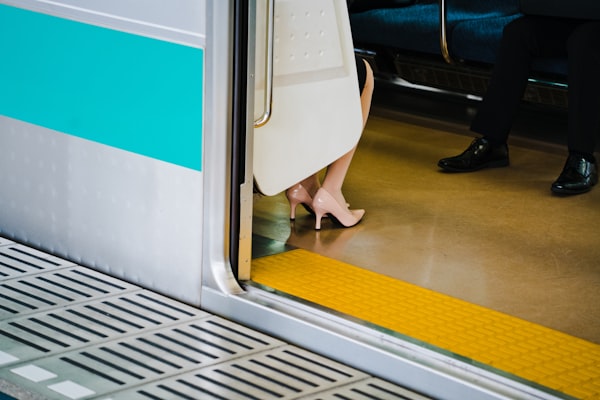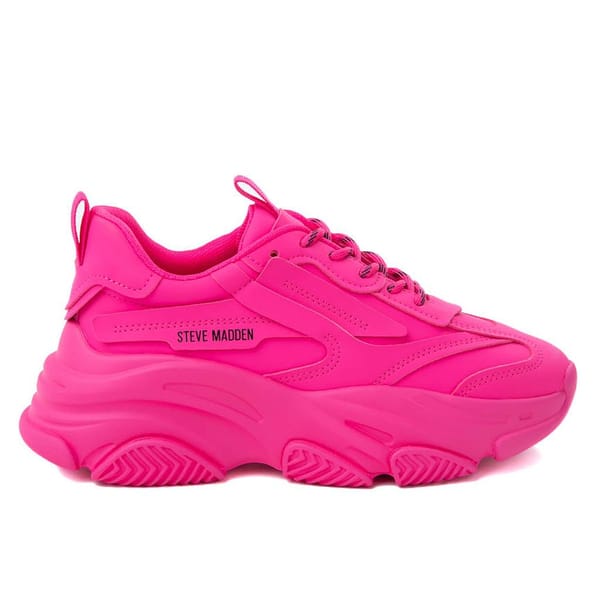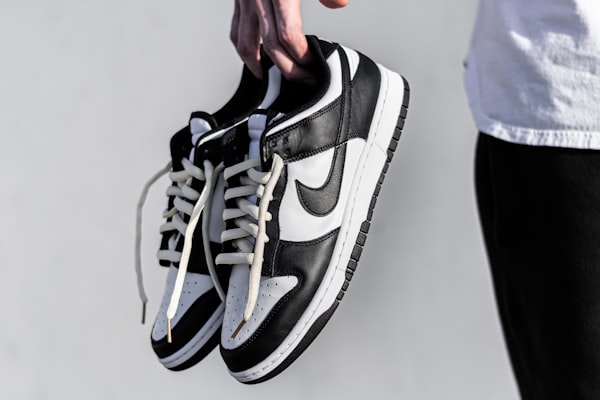Ready to kick it up a notch in the weight room? Prepare for a lifting experience like no other as we delve into the world of Vans as your trusty lifting shoes.
Ah, Vans, the iconic footwear that's been synonymous with skaters and street style for decades. But have you ever wondered if these cool kicks can hold their own in the world of heavy iron and squat racks? Strap in because we're about to uncover the surprising truth behind Vans as lifting shoes.
Today, we unravel the Pros and Cons of strapping on a pair of Vans in the pursuit of gains. Get ready to unlock a new dimension of style and functionality in the gym as we explore whether these sneakers can help you elevate your performance to new heights.
So, slip on your favorite pair of Vans, and join us as we navigate the intersection of fashion and fitness. Get ready to make a bold statement in the weight room and discover if Vans truly have what it takes to be your lifting shoe of choice. Let's lift the veil on Vans and take your workouts to a new level.
Vans as A Brand: From Skateboarding Roots to Global Icon
When you think of Vans, the first image that probably comes to mind is a skateboarder effortlessly gliding through a halfpipe or performing gravity-defying tricks. And you wouldn't be wrong to associate Vans with skateboarding because that's where it all began.
Vans was founded in 1966 by Paul Van Doren and three business partners in California. What started as a humble store selling canvas sneakers directly to skateboarders quickly grew into a cultural phenomenon. The brand's rugged and durable shoes resonated with the skateboarding community, becoming essential to their lifestyle and identity.
So, how did Vans break free from the skateboarding subculture and become a global icon? Well, the answer lies in their ability to capture the spirit of youth rebellion and effortlessly blend it with stylish aesthetics. Their sneakers, characterized by the signature waffle outsole and distinctive side stripe, became synonymous with individuality, self-expression, and a carefree attitude.
While Vans gained widespread popularity for their association with skateboarding, they are not typically considered a dedicated lifting shoe. Traditional lifting shoes are designed with specific features like elevated heels, solid arch support, and rigid soles to optimize stability and performance during weightlifting movements.
However, as the fitness community continues to evolve, so do our footwear choices. Many lifters have started exploring alternatives beyond traditional lifting shoes. And that's where Vans come into the picture. These iconic sneakers offer a unique blend of style and functionality that has caught the attention of fitness enthusiasts. While they may not be the go-to brand for lifting shoes, there are some pros and cons to wearing Vans as lifting shoes.
The Pros of Vans as Lifting Shoes
When it comes to Vans as lifting shoes, it's not all about breaking the mold and embracing unconventional footwear. These iconic sneakers bring a range of unexpected benefits and advantages that can enhance your lifting experience in ways you might not have anticipated. Let's dive into the pros of strapping on a pair of Vans in pursuit of gains:
1. Comfort and Flexibility for Various Lifting Movements
Vans are known for their comfortable fit, thanks to their canvas or suede uppers and cushioned insoles. This comfort translates well into the weight room, allowing you to focus on your lifts without distractions. Moreover, Vans' flexible construction enables a full range of motion during squats, deadlifts, and lunges, enhancing your overall lifting performance.
2. Grip and Stability on Gym Floors
The signature waffle outsole that made Vans a hit in the skateboarding world also works wonders in the gym. The textured pattern offers excellent traction on gym floors, preventing slippage and providing the stability you need to maintain proper form during lifts. So, when you're pushing through those heavy squats or explosive cleans, rest assured that your Vans will keep you firmly grounded.
3. Lightweight Design for Improved Agility
Unlike bulkier lifting shoes, Vans' lightweight design promotes agility and nimbleness. This advantage can be particularly beneficial for dynamic exercises like box jumps, kettlebell swings, or plyometric movements. With Vans on your feet, you'll feel light on your toes, ready to tackle any explosive exercise that comes your way.
4. Fashion-Forward Appeal that Boosts Confidence
Let's face it, rocking a pair of stylish kicks can give you an extra boost of confidence in the gym. Vans' fashion-forward aesthetic and wide range of designs allows you to express your unique personality while working up a sweat. Whether you prefer classic checkerboard patterns or sleek monochrome styles, slipping into a pair of Vans can inject a dose of self-assuredness into your lifting sessions, helping you push through those challenging sets.
By embracing Vans as your lifting shoes, you gain the practical advantages of comfort, grip, and agility and tap into a sense of style and individuality that can energize your workouts. Remember, feeling good about what you're wearing can positively impact your mindset and motivation.
However, it's essential to recognize that Vans may not provide the same specialized features as dedicated lifting shoes, especially for advanced lifters or specific lifting disciplines. Evaluating your personal needs and goals is crucial before deciding if Vans are the right fit for your lifting endeavors.
The Cons of Vans as Lifting Shoes
While Vans bring a unique style and unexpected advantages to the world of lifting shoes, it's essential to acknowledge their potential drawbacks and limitations. Here are the cons to consider when strapping on a pair of Vans for your lifting sessions:
1. Lack of Specific Features Found in Dedicated Lifting Shoes
Vans are not specifically designed or marketed as lifting shoes. As a result, they lack certain features that are purposefully incorporated into dedicated lifting footwear. These features include elevated heels, which promote proper squat mechanics by improving ankle mobility and reducing knee stress. Vans' flat sole design may not offer the same mechanical advantage as lifting shoes in certain exercises.
2. Potential Issues with Heel Support and Elevated Platforms
The absence of an elevated heel in Vans can disadvantage lifters who rely on it for squatting or performing Olympic lifts. Lifting shoes with raised heels provides a more favorable ankle angle, allowing deeper squats and improved stability. Additionally, Vans' platforms tend to have minimal cushioning, which can impact shock absorption during heavy lifts.
3. Minimal Arch Support for Certain Foot Types
Vans, primarily designed for casual wear and skateboarding, may not provide the level of arch support required by individuals with flat feet or other specific foot conditions. Lack of proper arch support can lead to discomfort, reduced stability, and potential strain on the feet during lifting movements.
4. Not Suitable for Advanced Lifters or Specific Lifting Disciplines
While Vans can be a viable option for casual or recreational lifters, they might not meet the demands of advanced lifters or those engaged in specific lifting disciplines. Advanced lifters often require specialized features, such as reinforced heel cups, secure straps, or more rigid soles, to optimize their performance and mitigate the risk of injuries. Lifters focused on powerlifting, weightlifting, or competitive strength training may benefit more from dedicated lifting shoes tailored to their specific needs.
It's important to recognize that Vans' popularity in the lifting community stems from its versatility and unique blend of style and functionality. However, they may not be ideal for everyone, especially those with specific requirements or advanced lifting goals.
Before committing to Vans as your lifting shoes, consider your individual needs, lifting style, and long-term aspirations. If you're a beginner or someone who values comfort, flexibility, and a touch of fashion in the weight room, Vans might still be a suitable option. However, if you're looking for footwear that offers advanced features, specialized support, and enhanced performance, dedicated lifting shoes may be a better investment.
Debunking Myths and Addressing Concerns
Let's debunk some common myths and provide additional context to help you make an informed decision about incorporating Vans into your lifting routine:
Myth 1: Vans Lack Durability for Heavy Lifting
While Vans are known for their skateboarding heritage, they are constructed with durable materials that can withstand the demands of lifting. The canvas or suede uppers, reinforced stitching, and solid craftsmanship make them more resilient than meets the eye.
Myth 2: Vans Offer No Support or Stability
While Vans may not provide the same level of support as specialized lifting shoes, they still offer decent stability for most lifters. The grip and traction from the waffle outsole, combined with a secure fit, can help maintain balance and control during exercises.
Vans Excel in Versatility
Vans are renowned for their ability to transition seamlessly from casual wear to skateboarding and beyond. This versatility extends to lifting, allowing for a broader range of movements and exercises. The flexible nature of Vans makes them suitable for various workouts, including weightlifting, functional training, and bodybuilding.
Vans Are an Affordable Option
Unlike specialized lifting shoes that can come with a hefty price tag, Vans offers a more budget-friendly alternative without compromising style or functionality. For those who are just starting their fitness journey or prefer not to invest in dedicated lifting footwear, Vans provide a cost-effective option.
Choosing the right lifting shoes is a highly personal decision that depends on your unique preferences, goals, and biomechanics. Remember, there is no one-size-fits-all approach to lifting shoes.
The Verdict: Should You Lift in Vans?
Now that we've explored the pros, cons, and debunked myths surrounding Vans as lifting shoes, it's time to address the big question: Should you lift in Vans? Let's summarize the key points and help you make an informed decision based on your preferences and goals:
- Pros: In terms of pros, Vans offers comfort and flexibility for various lifting movements, grip and stability on gym floors, a lightweight design for improved agility, and a fashion-forward appeal that boosts confidence.
- Cons: They also have cons, such as lacking specific features found in dedicated lifting shoes, potential issues with heel support and elevated platforms, minimal arch support for particular foot types, and are unsuitable for advanced lifters or specific lifting disciplines.
When choosing lifting shoes, it's essential to consider your individual preferences and goals. Reflect on what matters most to you: Is it specialized features, budget-friendliness, style, or a balance of these factors? Assess your biomechanics, lifting style, and comfort requirements to determine if Vans align with your needs. Remember, what works for someone else may not work for you, so trust your instincts and make a decision that suits your unique circumstances.
One undeniable aspect of Vans is its unique style and versatility. These iconic sneakers allow you to make a fashion statement in the weight room while delivering decent comfort and functionality. If you appreciate individuality, want to inject some personal flair into your lifting sessions and value a brand with a rebellious spirit, then Vans might be the perfect fit for you.
Ultimately, the verdict on whether you should lift in Vans rests in your hands. Weigh the pros, cons, and debunked myths we've discussed, consider your preferences and goals, and choose what you value most in your lifting shoes. Whether you opt for specialized lifting shoes, experiment with Vans, or even alternate between different footwear options, what matters most is that you find the shoes that make you feel comfortable, confident, and motivated to reach new heights in your lifting journey.
Top Picks: Which Vans to Consider for Lifting
Now that we've explored the potential of Vans as lifting shoes and discussed the factors to consider when evaluating their suitability, you might be wondering which specific Vans models best fit your lifting needs. So, let's dive in and discover which Vans are worth considering for your lifting endeavors.
- Vans Authentic: Its low-profile design, lightweight canvas upper, and vulcanized sole make it an excellent choice for those seeking a minimalist lifting shoe. The flat sole provides a stable base for various lifts, while the flexibility allows for a full range of motion. With its timeless style and durability, the Authentic is a reliable companion in the weight room.
- Vans Old Skool: Its suede or canvas upper offers durability, and the padded collar supports the ankle during lifts. The reinforced toe cap enhances the shoe's durability, while the classic side stripe adds a touch of flair. The Old Skool's sturdy construction and reliable grip make it a reliable option for lifting sessions.
- Vans Ultrarange EXO: This model features a lightweight, breathable upper, a supportive EXO skeleton structure, and a cushioned footbed for added comfort during intense lifting sessions. The reliable traction of the outsole ensures stability, while the overall design offers a blend of style and performance.
- Vans Sk8-Hi: This high-top sneaker provides enhanced stability and protection for your ankles during lifts. The padded collar and reinforced upper offer a secure fit and added durability. With its iconic look and reliable grip, the Sk8-Hi combines style and functionality to elevate your lifting game.
Top Picks: Alternatives to Vans for Lifting
While Vans can undoubtedly be a good choice for lifting in certain situations, they are not always the best option for every lifter. If you're looking for alternatives to Vans for lifting, here are a few specific models from different brands that you may want to consider:
- Nike Metcon: These shoes are designed for cross-training and weightlifting, offering stability, durability, and flexibility. The Metcon's flat, stable sole, reinforced heel, and secure fit provides excellent support during heavy lifts. With a focus on performance and versatile functionality, the Nike Metcon is a reliable companion for your lifting sessions.
- Reebok Nano: Built to withstand the demands of functional fitness and weightlifting, the Nano offers a stable platform, a supportive heel clip, and a flexible yet durable construction. The shoes' responsive cushioning and breathable upper provide comfort during high-intensity workouts. With its focus on performance and innovation, the Reebok Nano series is a popular choice for serious lifters.
- Adidas Powerlift: These shoes feature a raised heel, providing the necessary ankle mobility and improved squat depth. The Powerlift models offer a secure fit, lightweight design, and a sturdy base for stability during lifts. Designed with powerlifting in mind, Adidas Powerlift shoes can be valuable in your pursuit of strength gains.
- New Balance Minimus: With a focus on natural movement and a low-to-the-ground feel, these shoes offer a barefoot-like experience while providing essential support. The Minimus features a stable sole and a secure fit, making it suitable for those who prefer a minimalist approach to lifting. The New Balance Minimus line might be the perfect fit if you prioritize flexibility and freedom of movement.
Tips from Our Editors
When selecting lifting shoes, it's important to consider the following features when evaluating the suitability of a shoe:
- Stability and Support: Lifting shoes should provide stability and support to help maintain proper form and alignment during lifts. Look for features like a firm and non-compressible sole, secure straps or laces, and a structured upper that holds the foot in place.
- Heel Height and Angle: The heel height and angle can affect squat mechanics and ankle mobility. Lifting shoes typically have an elevated heel that allows for greater depth in squats and improved positioning for various lifts. Consider your lifting style and flexibility when assessing the ideal heel height and angle for your needs.
- Sole Grip and Traction: Lifting shoes should offer a reliable grip and traction on gym surfaces to prevent slipping or instability during lifts. Look for outsoles with patterns or materials that provide sufficient traction without compromising your ability to move or pivot.
- Durability and Construction: Since lifting involves repetitive and heavy loads, durability is crucial. Choose shoes with durable materials, reinforced stitching, and solid construction that can withstand the demands of weightlifting over time.
- Comfort and Fit: Comfort is essential for optimal performance during workouts. Look for shoes that offer a comfortable fit, with adequate room in the toe box, proper arch support, and cushioning that suits your foot shape and preferences.
- Flexibility and Range of Motion: Lifting shoes should allow proper ankle and foot mobility while maintaining stability. Consider the flexibility of the shoe's materials and design, ensuring they allow for a full range of motion without compromising support.
- Lifting Style and Goals: Different lifting disciplines have specific footwear requirements. Consider your lifting style and goals. Are you focused on powerlifting, Olympic weightlifting, or general strength training? Each discipline may benefit from certain shoe features or characteristics tailored to its specific demands.
- Personal Preference: Finally, personal preference plays a significant role in selecting lifting shoes. Factors such as style, brand reputation, and individual aesthetic preferences can influence your choice. Feeling confident and motivated in your lifting shoes can positively impact your performance and mindset.
On a Final Note
While Vans may not be the traditional lifting shoe, they've proven to be more than just a pretty sole. With their unique blend of style and functionality, they've managed to skate their way into the hearts of lifters worldwide.
Whether you're a trendsetter looking to break the mold or simply seeking a fresh twist on your lifting game, don't be afraid to lace up those Vans and confidently step into the weight room.
Remember, in the world of gains, there's always room for a little rebellion and a whole lot of sole. Keep lifting, rocking, and pushing the boundaries, one stylish rep at a time!
Related Articles








